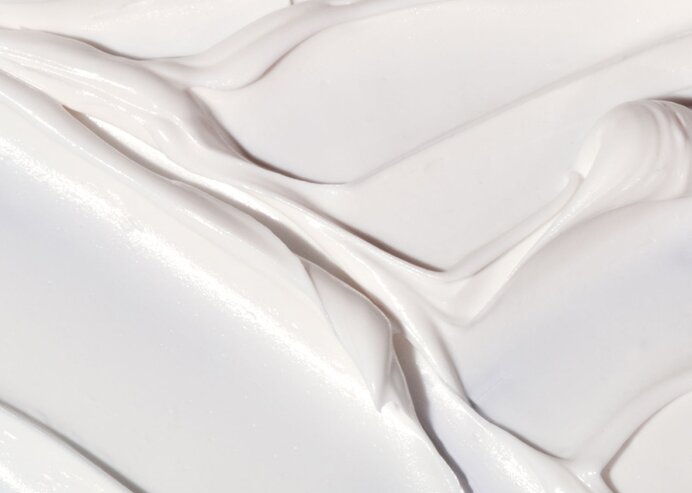
INGREDIENTS
Sunscreen 101: Your Essential Guide to SPF and Sun Safety
Discover everything you need to know about sunscreen, SPF and sun safety in our comprehensive guide to effectively protecting your skin.
Protecting your skin from the sun is one of the most important steps in maintaining a healthy, radiant complexion. Not only does sunscreen shield your skin from harmful UV rays, but it also plays a crucial role in preventing premature aging, pigmentation, and, most importantly, reducing the risk of skin cancer. Whether you're enjoying a sunny day outdoors or simply going about your daily routine, sun protection should always be a priority.
Understanding sunscreen, SPF and sun safety can be confusing, but it's essential for getting the most out of your sun protection. Choosing the right sunscreen for your skin type, knowing how to apply it correctly and understanding what SPF really means are all key components of an effective sun care routine.
In this guide, we’ll break down the science behind sunscreen, debunk some common myths, and provide expert tips on how to make sunscreen a seamless part of your skincare regimen—so you can protect your skin and maintain a glowing complexion all year round.
What Is Sunscreen and Why Is It Important?
Sunscreen is a topical product designed to protect your skin from the sun's ultraviolet (UV) rays, which are responsible for causing damage to your skin. UV rays are divided into two types:
- UVA rays: These rays penetrate deeper into the skin and contribute to aging, fine lines, and wrinkles.
- UVB rays: These rays primarily affect the surface of the skin, causing sunburns and playing a key role in the development of skin cancer.
By using sunscreen, you're providing a protective barrier against these harmful rays, preventing immediate damage like sunburn, as well as more long-term concerns such as premature aging and skin cancer.
While exposure to sunlight has multiple benefits, including enabling your body to make vitamin D, which strengthens your bones and regulates your immune system, it also increases your risk of skin cancer. It’s estimated that about 80% of skin’s aging is caused by sun exposure. Wearing sunscreen is, therefore, the best–and easiest–way to protect your skin.
Understanding SPF: What Does It Mean?
SPF stands for Sun Protection Factor and is a measure of how well a sunscreen can protect your skin from UVB rays, the kind responsible for sunburn. The number next to SPF (for example, SPF 30 or SPF 50) indicates how many times longer you can be exposed to the sun without getting burned compared to being unprotected.
- SPF 30 blocks about 97% of UVB rays.
- SPF 50 blocks about 98% of UVB rays.
Though a higher SPF offers slightly more protection, no sunscreen can block 100% of UV rays. Regardless of the SPF, it’s important to reapply sunscreen every two hours—or more frequently if you're swimming or sweating.
Broad-Spectrum Protection: UVA vs. UVB Rays
When selecting a sunscreen, it’s crucial to choose one that offers broad-spectrum protection. This means the sunscreen shields your skin from both UVA and UVB rays.
- UVA rays: These penetrate deeper into the skin and contribute to signs of aging, such as wrinkles and pigmentation. They can even damage your skin cells and cause DNA mutations, which increase the risk of skin cancer.
- UVB rays: These are responsible for causing sunburns and have a significant role in the development of skin cancer.
A broad-spectrum sunscreen ensures you're covered on both fronts, keeping your skin protected from the full spectrum of harmful UV rays.
Mineral vs. Chemical Sunscreens: Which Is Right for You?
There are two main types of sunscreens: chemical and mineral (also known as physical). Both types provide UV protection, but they work in different ways and have distinct benefits. According to recent studies, mineral sunscreens are often considered a superior choice for sun protection, especially for those with sensitive skin.
Chemical Sunscreen
Chemical sunscreens contain active ingredients such as Avobenzone, Homosalate, Octinoxate and Oxybenzone. These ingredients absorb UV rays, convert them into heat, and release the heat from the body. Chemical sunscreens are usually lightweight and clear, making them ideal for daily use under makeup or for those who prefer a more invisible finish. However, they can wear off more quickly than mineral sunscreens and generally need to be reapplied every couple of hours for continued protection.
Mineral (Physical) Sunscreen
Mineral sunscreens, also known as physical sunscreens, typically contain active ingredients like Zinc Oxide and Titanium Dioxide, both of which are classified as safe and effective by the FDA. These sunscreens work by sitting on top of the skin and physically reflecting UV rays away from the surface.
Recent studies have shown that mineral sunscreens offer superior protection compared to chemical sunscreens, especially for long-lasting, broad-spectrum defense against both UVA and UVB rays. Zinc Oxide provides protection across the entire UVA range, as well as some UVB protection, while Titanium Dioxide protects primarily against UVA2 and UVB.
The FDA has determined that only Zinc Oxide and Titanium Dioxide are safe and effective based on current data, while many ingredients found in chemical sunscreens, such as Avobenzone, Homosalate and Oxybenzone, were not recognized as generally safe due to insufficient data. This has made mineral sunscreen a recommended choice for many, especially for those concerned with potential chemical absorption.
How to Apply Sunscreen Correctly
Even the best sunscreen won’t be effective if not applied properly. Here’s how to make sure you’re getting the most out of your sunscreen:
- Apply Generously: Use about one ounce (the size of a shot glass) to cover your entire body. Don’t forget areas like your ears, the back of your hands, and the nape of your neck.
- Apply 15 Minutes Before Exposure: Apply sunscreen at least 15 minutes before going outside to give it time to absorb into your skin and start working.
- Reapply Regularly: Reapply every two hours, or immediately after swimming or excessive sweating.
- Layer It with Other Products: If you're using other skincare products like serums or moisturizers, apply sunscreen as the final step in your morning routine. This ensures it remains effective.
Common Sunscreen Myths Debunked
There are several myths surrounding sunscreen and sun protection. Let's debunk a few:
- Myth #1: Sunscreen isn’t necessary on cloudy days.
- Fact: Up to 80% of UV rays can penetrate through clouds. Even on overcast days, it’s essential to wear sunscreen.
- Myth #2: You don’t need sunscreen if you’re indoors.
- Fact: UVA rays can penetrate windows, meaning you're still exposed to harmful rays even when you're inside. Don’t skip sunscreen when working at a desk near windows or lounging at home.
- Myth #3: A higher SPF means all-day protection.
- Fact: No sunscreen is completely waterproof, and SPF protection doesn’t last all day. Reapply sunscreen every two hours or after swimming or sweating to ensure continued protection.
Choosing the Right Sunscreen for Your Skin Type
When selecting a sunscreen, consider your skin type:
- Oily skin: Look for an oil-free, non-comedogenic sunscreen that won’t clog pores.
- Dry skin: Choose a sunscreen that contains moisturizing ingredients like hyaluronic acid to keep your skin hydrated.
- Sensitive skin: Mineral sunscreens with soothing ingredients like aloe vera or chamomile are often gentler on sensitive skin.
- Acne-prone skin: Opt for a lightweight, non-comedogenic formula that won’t exacerbate breakouts.
Finding the right sunscreen for your skin type will help you maintain a healthy and glowing complexion while providing the protection you need.

Doctor's Note
Sunscreen should be applied every day, even when you’re indoors or during winter months. Make it a part of your morning skincare routine—after applying your serum and moisturizer, but before makeup. And remember, sunscreen isn’t just for the beach! Whether you’re running errands, working, or relaxing outdoors, sunscreen is your skin’s first line of defense.
Additional Reading
Your Shopping Bag
Your shopping bag is empty











